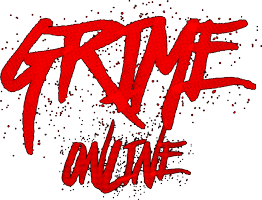Sections
A new exhibition explores how the genre has changed since it began in east London
Jane Recker
Daily Correspondent
Originally an underground sound, grime has gone mainstream in Britain—and since its creation, it has become hugely influential for artists around the world.
Now, a new free exhibition celebrates the scene’s origins and evolution. “Grime Stories: From the Corner to the Mainstream” at the Museum of London features photos, videos and memorabilia documenting two decades of grime.
The display is co-curated by Roony “RiskyRoadz” Keefe, who the museum calls “one of grime’s early documentarians.” In particular, his DVD series Risky Roadz helped propel artists to fame in the years after the genre’s creation. Per the Guardian’s Joseph Patterson, much of what is on display comes from the archives of Keefe and others like him.
“Grime is one of those genres that once it’s in you, it never leaves,” Keefe tells the Guardian.
The museum originally asked Keefe, a London cab driver by day, to conduct interviews about the grime scene in the back of his taxi. Now, a series of films, which include Keefe’s interviews with influential grime artists like Skepta and DJ Slimzee, are at the center of the exhibition, BBC News reports.
“It’s a big thing, you know,” says Keefe to the New York Times’ Desiree Ibekwe. “You never think you’re going to end up in a museum.”
Grime emerged in the early 2000s among artists in east London who wanted a sound that was uniquely theirs. It was both an “evolution from and reaction to” U.K. garage music, as the Times writes. “Other British forms of rap had become overly Americanized, some felt, with slang borrowed from across the Atlantic.”
While the genre’s definition has evolved over the years, grime music generally has a tempo of 140 beats per minute; the Guardian describes it as “post-punk angst on wax—a heady mix of dancehall, jungle and U.K. garage, inspired by Jamaican ragga toasting and the storytelling of U.S. hip-hop.”
Artists in the scene align themselves with grime crews that produce and perform music together. One of the most notable crews is Roll Deep, formed in the early 2000s, which has included performers like Wiley, Danny Weed, Breeze, Skepta and Dizzee Rascal.
In recent years, grime has seen a resurgence with the arrival of new artists like Stormzy, who the Times calls “grime’s most successful breakout.” In 2017, the Labour Party’s Jeremy Corbyn enlisted grime artists to encourage the public to vote for him, per the Times. In 2019, IKEA featured grime M.C. D Double E in a Christmas commercial.
“This is a monumental moment in the U.K., especially for Black British culture,” Jammer, an early grime artist, tells the Guardian.
From the early days, Jammer’s family’s basement—known as “the Dungeon”—was a critical place for grime artists, and the new exhibition features many references to the space.
When grime began, he adds, it was “the only thing we knew how to do to make a better life for ourselves. Grime is like our therapy: you go into it with your pain, get your lyrics out … and then you get better and you learn.”
“Grime Stories: From the Corner to the Mainstream” is on view at the Museum of London through December.
| |
Jane Recker has written for Washingtonian Magazine and the Chicago Sun-Times. She is a graduate of Northwestern University and holds degrees in journalism and opera.
Explore
Subscribe
Newsletters
Our Partners
Terms of Use
© 2022 Smithsonian Magazine Privacy Statement Cookie Policy Terms of Use Advertising Notice Manage My Data Cookie Settings

